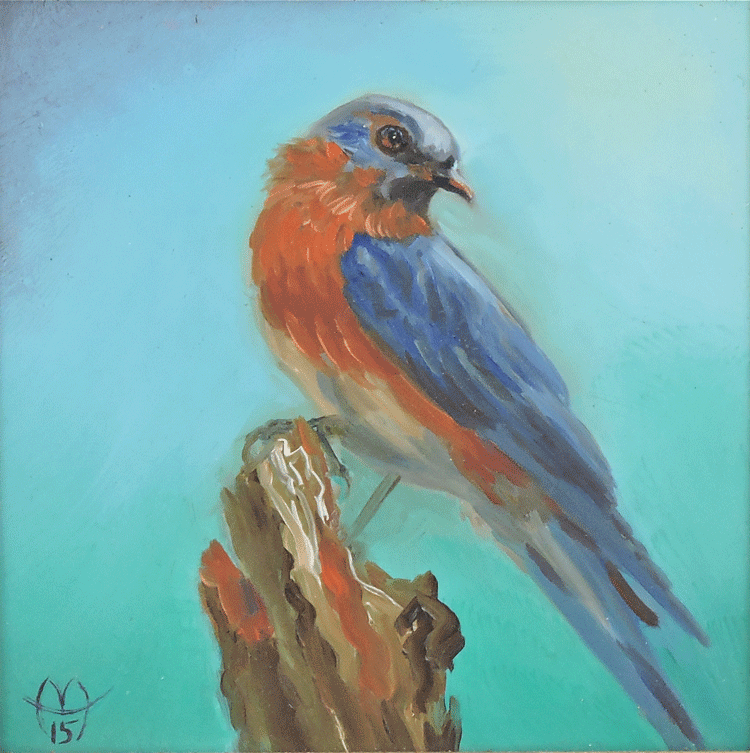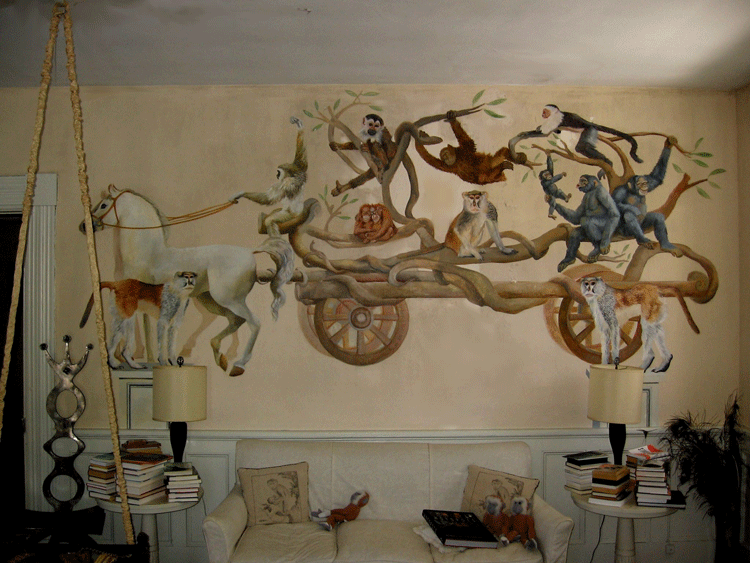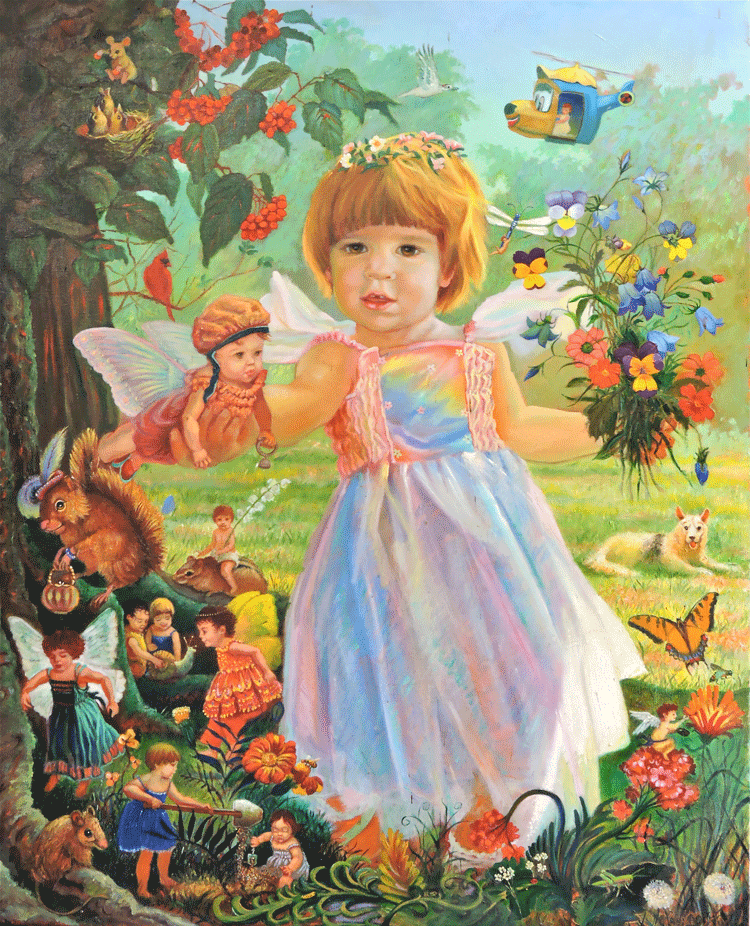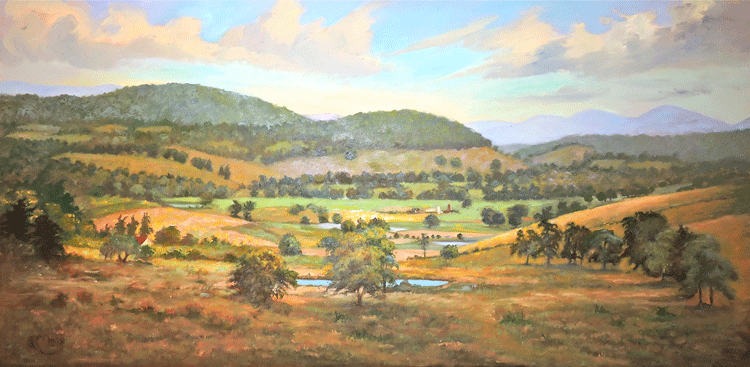Artist Misia Broadhead

Story and photos by Richard Hooper
By the age of 8, Misia Broadhead already knew that she wanted to be an artist, a painter. Born in Washington, D.C., she had been living in Rome since the age of 4, and the culture, history and art had already impressed itself upon her.
It continued to do so during her next 26 years of residence there (with an interlude of studying art at the Byam Shaw School of Drawing and Painting in London). As an adolescent, she adorned her bedroom with a poster, not of a rock star or an actor or actress, but of Sandro Botticelli’s painting “The Birth of Venus.”

As Misia stated, “I grew up in Rome. Art is all around you. You live it, breathe it. It’s in your soul. You are surrounded by layer and layer of cultural history.”
And, if you are someone like Misia, living in the place where the Renaissance began makes an indelible impression.
Misia would return to the United States annually to visit her grandmother, Gladys Tartiere, at Glen Ora, the property that was once the Kennedys’ Middleburg retreat. The property was eventually inherited by Misia’s mother, Elaine Broadhead. After Misia married Anthony Barham, they moved to Glen Ora, where they lived until recently.
Misia’s mother is an activist with many causes, one of which, protecting monkeys and other primates against torturous research experiments, inspired Misia, in the 1990s, to paint a mural in one of the rooms at Glen Ora. Referred to as “The Monkey Room,” all four walls are adorned with depictions of monkeys, apes, orangutans and similar species. It is beautiful; really another world. All the apes are painted with a combination of idealization and fantasy. Misia referred to it as “classical staging.” There is no greenery, like in the jungle paintings of Henri Rousseau. There are architectural and other elements to the composition, but the walls are the background. The subjects, painted in precise detail, stand out in their isolation like the horse in George Stubbs’ painting “Whistlejacket.” More so than with the association of the Kennedys, Glen Ora should be known for the paintings in this room.

The Glen Ora mural was painted directly onto the wall, but Misia’s preference is to paint on canvas and then apply that to the wall. It can be removed later if need be, as was done to one 33-foot long commissioned piece at the restaurant Artie’s, in Fairfax. Some 20 years after she had completed the work, Misia received a phone call from a woman asking her if she would like to see it. Artie’s had closed, and the woman had purchased the mural, had it removed and was installing it in her home. Another restaurant mural that Misia painted featured a portrait of the owner as the central figure in a Renaissance hunting scene.
More than murals, Misia paints landscapes, birds, allegories, informal portraits and other scenes. Her allegories, while secular, derive from the idea incorporated in religious paintings of telling stories to an illiterate populace. This illustrates the influence of her time in Italy.
Her informal portraits can bring together numerous elements of a person’s life. A painting of the couple’s daughter is titled “Navona in Fairyland.” It shows Navona as a toddler wearing a princess dress, a crown of flowers on her head. In one hand she delicately holds herself as a baby of six months; in the other she has a bouquet of flowers. All around her are depictions of her adventures, friends and things she adored. It’s a lovely portrait and an enchanting record of childhood. Who could possibly not want one of their own child?

Misia’s bird paintings are an intimate, small size, and her popular landscapes feature local scenes. “Landscapes,” said Misia, “are like looking through a window to the outside.”
Misia’s work can be seen at the Middleburg Antique Emporium and at The Inn at Little Washington. More of her work can also be found at www.broadheadbarham.com. ML



